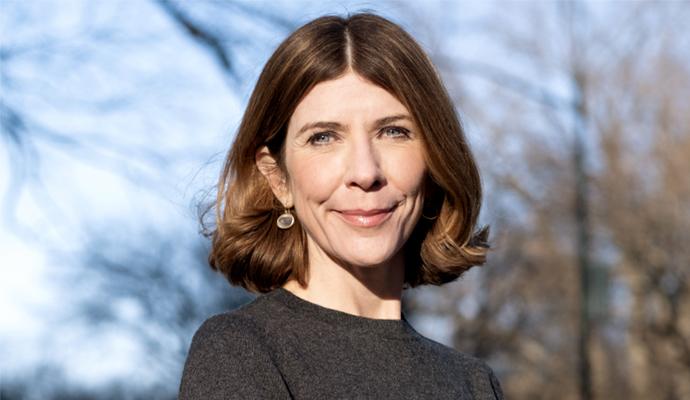What’s Your Platform, Baby?
The key to tech customer loyalty isn’t about being the biggest—it’s about embracing the smallest.
It’s the best of times. It’s the worst of times. No, I’m not talking about the economy or global politics—I’ve reached that biannual moment when I’m eligible for a new cell phone. On the one hand, there’s the glistening perfection of a virgin device: unscratched, never dropped, and so full of possibility. On the other, there’s the sheer multiplicity of decisions that must be made: the phone, the plan, the ringtones, the apps. I’m torn between the endorphin rush of acquisition and the desire to retreat to the cozy simplicity of two cans connected by string.
I first entered into the cellular universe with a bag phone, a portable phone so large it literally had to be carried around in a bag. At that time, there was a choice of two phones and just a couple calling plans. Batteries lasted about an hour and you were allotted a few dozen minutes per month. The phone weighed about as much as the Encyclopedia Britannica. But for better or worse, the alluring possibility of 24/7 accessibility was uncorked. Call me, baby. Anytime, anyplace.
Then, on June 29, 2007, Apple unveiled the iPhone, injecting sensuality and sexuality into a utilitarian device. The phone fetish was born and hardware was hot. Hey baby, want to touch my screen?
The physical device moved to the center of the decision process and Steve Jobs ruled the world… for a while. The iPhone may have been the first vixen phone, but Google’s acquisition of the Android soon countered with its own beefcake device. By 2011, Android phones had begun to outsell iPhones five-to-two.
This was, however, no longer just a battle of handsets. It was a showdown of specialized mini-software bundles called apps. An Apple device opened a world of apps and the company trumpeted its vast selection as a competitive advantage; remember the "There's an app for that” advertising campaign?
Full disclosure: I have owned BlackBerry, Android, and Apple smartphones over the past several years. Each of these did some things really well and other things not so well. The “perfect” phone was elusive. As I considered my next cellular companion, I realized that the “perfect” phone would be the one that talked fluently with the rest of my devices. Hey baby, let’s connect.
To help me sort this all out, I turned to Nicco Mele, a friend who is practically prescient when it comes to the digital future. He was an advisor on digital strategy to two U.S. presidential campaigns (including his position as the Web guru for the Howard Dean campaign, which demonstrated that social media could—and would—be a powerful force in electoral politics). He advises major corporations and foundations. He’s the author of The End of Big: How the Internet Makes David the New Goliath. Certainly, he could help solve my dilemma.
“The Internet has humbled big legacy players and enabled the explosion of small: citizen movements influencing elections and even toppling governments, the reemergence of artisanal production and entrepreneurial retail thanks to ecommerce, and the democratization of publishing, software development, and many other areas,” Mele says. “It has also given birth to the world of platforms that enable so many of the small players.”
The Internet has humbled big legacy players and enabled the explosion of small.
He sketched out the landscape for me. Seven platforms dominate online life in the United States: Amazon, Apple, eBay, Facebook, Google, Microsoft (largely, in his view, through Skype), and Twitter. Most of us who spend a significant amount of time online interact with many, if not all, of them to one degree or another. (Guilty as charged.)
But the variety also presents a bit of a problem. “The challenge for people like you and me is that these platforms don’t always play well together,” Mele says. “And it is getting worse. Many of the platforms are dependent upon advertising for revenue and so they want you in their universe—their browser, their search engine, their chat app—not someone else’s. They try to lock you in and consumers never like involuntary lock-in.”
He hit the nail of my frustration right on the head. I need my work desktop, home laptop, tablet, and phone to be in sync across applications including Gmail, Outlook, Evernote, Mindmeister, and more. I want my browser of choice to work with my preferred email service. I can choose some aspects of my techno ecosystem myself while others have been chosen for me. And not everyone has chosen the same platform. And from what I heard as I was writing this column, I’m far from alone in this.
What to do? I won’t reveal my decision here, so as not to give even an implied platform endorsement. However, I have derived several insights for companies hoping to win some brand love from ultra-connected customers:
- Build bridges, not moats. I put greater value on what you enable me to do, not what you are. The easier you make it for me to operate across my unique constellation of products and services, the happier and more loyal I’ll be. Embrace the panoply of small that you have enabled, oh lords of the platforms, and forget trying to control everything.
- Move beyond advertising revenue. Few people actually like ads; we tolerate them to get free content and services. The more intrusive, annoying, or creepy you get in hopes of creating value for advertisers, the less value you provide to users like me. And a diversified revenue mix will make it easier to fill in moats and build bridges.
- Be aware of your fragility. Mele believes that most of current platforms have relatively weak positions for long-term sustainability. “Everyone gets disrupted eventually, and increasingly the fall is hard and fast. When users vacate, the value of the platform evaporates.” In other words, remember that the heady buzz of Silicon Valley only goes so far. You have to earn users’ love each and every day, baby.





